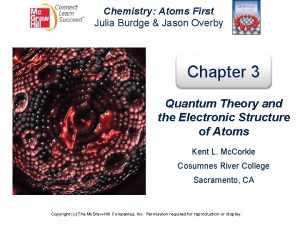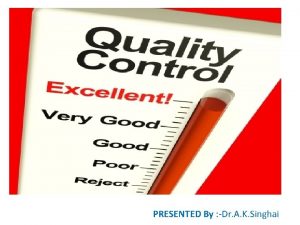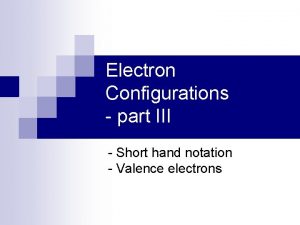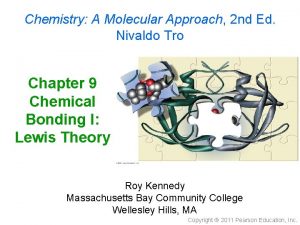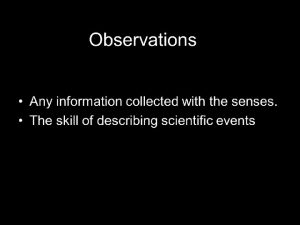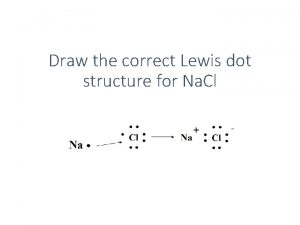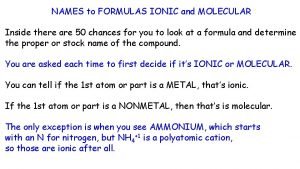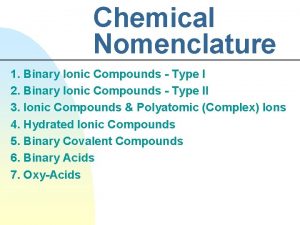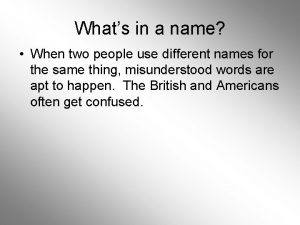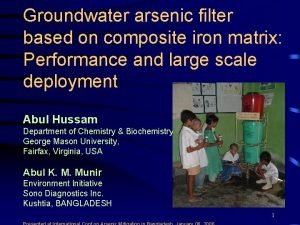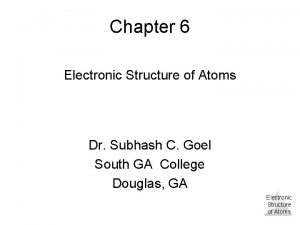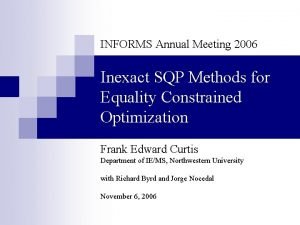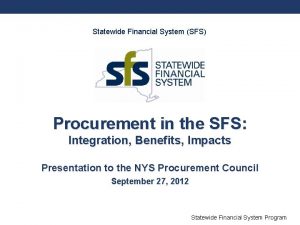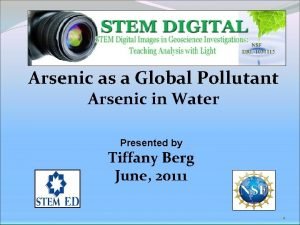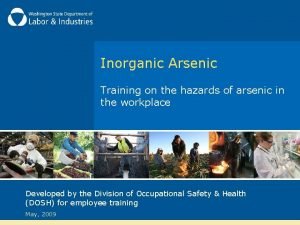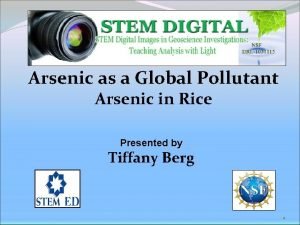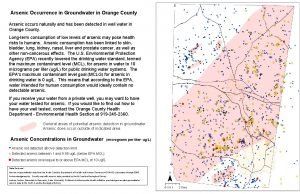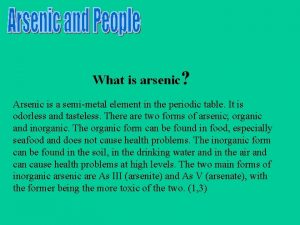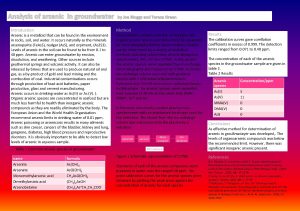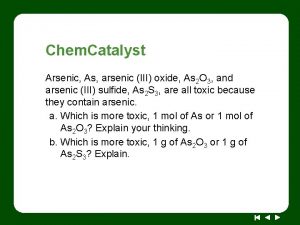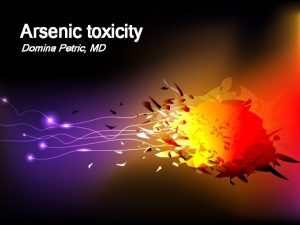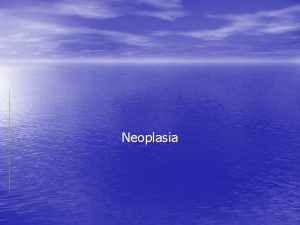SFS 2016 Annual meeting INFLUENCES OF ARSENIC ON














- Slides: 14

SFS 2016 Annual meeting INFLUENCES OF ARSENIC ON FRESHWATER BIOFILMS, FISH AND THEIR NUTRIENT CYCLING INTERACTIONS Baigal-Amar Tuulaikhuu, Anna M. Romaní Berta Bonet, Laura Barral, Kit Magellan, Helena Guasch Institute of Aquatic Ecology, Department of Environmental Sciences, University of Girona, Spain

Background Arsenic and other metal(loid)s are released from mining or industrial activities and enter to water and soil As As Cu As As contained rocks Zn Fe As As Mo

Biofilm modulates As toxicity to fish Background The most toxic to fish and other animals Biofilms (© Stream Biofilm Project, The University of Auckland) Periphyton i. As (V) i. As (III) MMA (V) MMA (III) DMA (V) DMA (III) TMAO (V) TMA (III) Epipsammon Biofilm converts arsenic species

Objective The purpose of this study was to evaluate if environmentally-realistic arsenic exposure causes toxicity to aquatic organisms. We investigated: • The fate of arsenic • Effects on biofilms structure and function • Effects on fish growth and physiology using a simplified fluvial system

Experimental set up Methods epipsammon was developed on it 12

Results Arsenic fate 120 µg/L Fish 0. 89 60 days 28 µg/L 19. 1 % Water 0. 32 % Periphyton 79. 7 % Sediment Most Arsenic was retained to sediment The contribution of biofilm to Arsenic retention was low Accumulation in fish was very low

B B+As Chl-a Results B B+As AFDW p=0. 007 p=0. 63 periphyton epipsammon µg/cm 2 As effect on structural and functional attributes of biofilm p=0. 69 periphyton p=0. 035 epipsammon Autotrophic index p=0. 568 periphyton Tuulaikhuu et al. , 2015 Aquatic toxicology 166, 72 -82 p=0. 007 epipsammon Live to dead bacteria ratio p=0. 35 periphyton p=0. 018 epipsammon

Results As effect on structural and functional attributes of biofilm Nutrient cycling and stoichiometry Measured C, N, and P in the biofilm (%) Periphyton Calculated total amount Change B B+As Excreted +Egested P by fish (mg in 56 % days mean±SD per Eu) 23. 4± 2. 6 -15. 8 P in. C (%) periphyton (mg) 19. 7± 2. 5 N (%) 0. 72± 0. 16 0. 64± 0. 1 P (%) 0. 04± 0. 028± 0. 01 P in epipsammon (mg) - 11. 1 B 9. 57± 0. 29 C (%) 1. 78± 0. 9 Epipsammon p B+As B B+As Change 8. 36± 0. 87 0. 079 % mean±SD 15. 2± 5. 5 0. 61± 0. 1911. 6± 1. 8 0. 092 - 23. 7 N (%) 0. 99± 0. 35 0. 68± 0. 17 - 31. 3 P (%) 0. 07± 0. 02 0. 06± 0. 01 - 14. 3 2. 3± 0. 26 0. 094 0. 23± 0. 05 1. 000 118. 5± 4. 9 103. 9± 10. 8 0. 1 31. 3± 8. 2 13. 6± 4. 0 0. 028 N in epipsammon (mg) 50. 9± 24. 6 31. 0± 9. 3 0. 262 Total N in water (90 L) 8. 37± 2. 5 4. 0± 4. 0 0. 191 Total P in water (90 L) - 30. 0 Excreted +Egested N by fish (mg in 56 days per Eu) N in whole periphyton (mg) 3. 7± 1. 1 0. 23± 0. 05

As effect on structural and functional attributes of biofilm Extracellular enzyme activities Phosphatase β-Glucosidase p=0. 04 p<0. 001 periphyton epipsammon p=0. 31 p=0. 092 B B+As (nmol MUF/cm 2. h) B B+As p=0. 67 p=0. 32 periphyton epipsammon (nmol MUF/g AFDW. h) Tuulaikhuu et al. , 2015 Aquatic toxicology 166, 72 -82 Results periphyton epipsammon p=0. 04 periphyton p=0. 36 epipsammon

Arsenic effect on fish growth Results Arsenic did not influence fish growth rates overall; yet smaller fish gained less weight and larger fish gained more weight in +As treatment. P=0. 075 (Fish length×As in ANCOVA) Gained weight of fish in the treatments per day linked to their body length. The lines show a linear regression of the gained Tuulaikhuu et al. , 2016 weight and fish length. Science of the Total Environment 544, 464 -475

Arsenic effect on fish Antioxidant Enzyme activities Results Tuulaikhuu et al. , 2016 Science of the Total Environment 544, 464 -475

Concentration Summary CAT water Conductivity O 2 NO 3 biofilm sediment Time Periphyton Lower biomass , lower nitrogen content and lower phosphatase activity Epipsammon Lower proportion of algae (more heterotrophic), lower phosphatase activity and a higher proportion of dead bacteria Sediment Fish Higher catalase activity and changes in growth Live bacteria Dead bacteria Phosphatase activity Food consumption and excretion Diatom Green algae Catalase activity CAT Toxicant

Concluding remarks Ø Our results highlight the interest and application of incorporating some of the complexity of natural systems in ecotoxicology Ø Support the use of criterion continuous concentration (CCC) for arsenic lower than 150 μg/L and closer to the water quality criteria to protect aquatic life recommended by the Canadian government (5 μg As/L).

Acknowledgements Financial support: Spanish Science and Education Ministry (Project CTM 2009 -14111 -CO 2 -01) and the Spanish Economy and Competitiveness Ministry (Project CGL 2013 -43822 -R). Baigal-Amar Tuulaikhuu benefited from a doctoral fellowship from the Techno 2 Program of the European Union Erasmus Mundus partnership. Thank you for your attention Thank you very much for your attention
 Ground state electron configuration of arsenic
Ground state electron configuration of arsenic Collapsibility test for plastic containers
Collapsibility test for plastic containers Shorthand electron configuration for arsenic
Shorthand electron configuration for arsenic Lewis structure for arsenic
Lewis structure for arsenic Personal identification
Personal identification Sr lewis dot structure
Sr lewis dot structure What is chromium?
What is chromium? What is binary ionic
What is binary ionic Formula for arsenic pentabromide
Formula for arsenic pentabromide Verbal irony in arsenic and old lace
Verbal irony in arsenic and old lace Sono arsenic filter
Sono arsenic filter Ground state of arsenic
Ground state of arsenic نصف القطر الذري
نصف القطر الذري Aashto annual meeting 2015
Aashto annual meeting 2015 Informs annual meeting
Informs annual meeting
